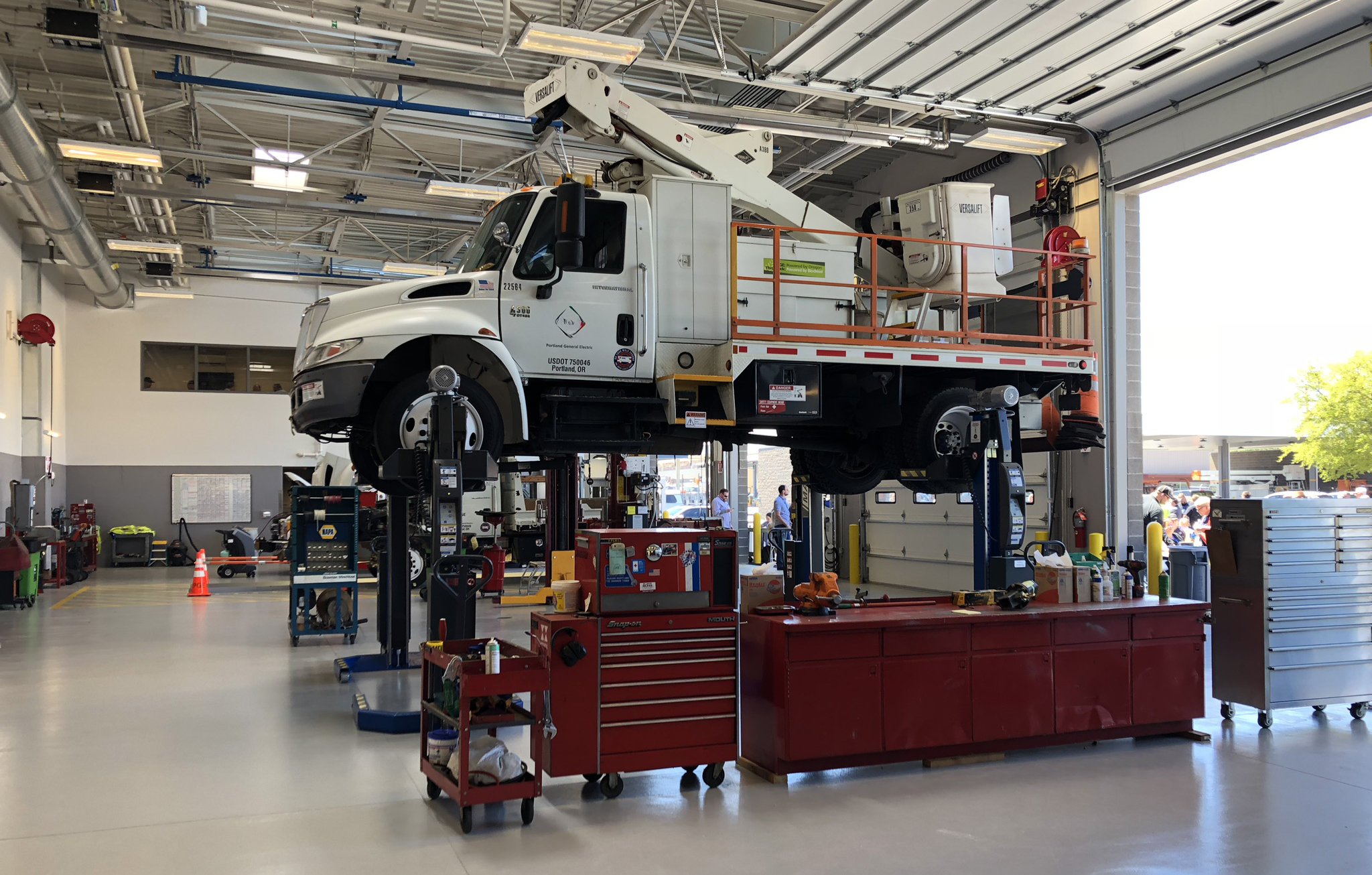Industrial building types are not the first structures that come to mind when most people think of high performance.
A Client Who Walks the Walk
For our local utility client, however, living by example is a key element to their decision-making process. In 2015, FFA renovated one of their office buildings, completely upgrading the envelope, mechanical system, and improving daylighting to achieve LEED v3 Gold certification. When approached to design a new vehicle maintenance facility on the same Portland area campus two years later, we knew to ask about energy goals.

Simple Design Yields Impactful Results
Renewable energy, in the form of a solar photovoltaic array, was important to our client from day one. The design is simple, a rectangular structure organized into five vehicle maintenance bays flanked on either end by a storage mezzanine and an office and break area. Four sawtooth roof monitors were added above the maintenance bays to allow natural light and air to enter high windows facing north as well as provide south sloping structure for a 28-kilowatt photovoltaic array. While these design elements added upfront costs to the project, our client remained committed to long-term investment.
Other energy load reducing features included a high mass Concrete Masonry Units (CMU) fully insulated exterior envelope, five large overhead doors that allow for airflow and end the need for air conditioning, and LED lighting. We added a couple of electric vehicles charging stations with the capacity to charge large trucks.
After a year of operations, our client reports all their electricity bills are net zero, costing them only a small standard monthly service charge. It is a great success story for the organization, which awarded the project its annual Sustainable Building award. For FFA, it marks significant progress toward our commitment to achieving the goals of the 2030 Challenge, a call to reduce greenhouse gas emissions from buildings to net zero by 2030. This project is an important reminder that all building types can and should be high performing.
